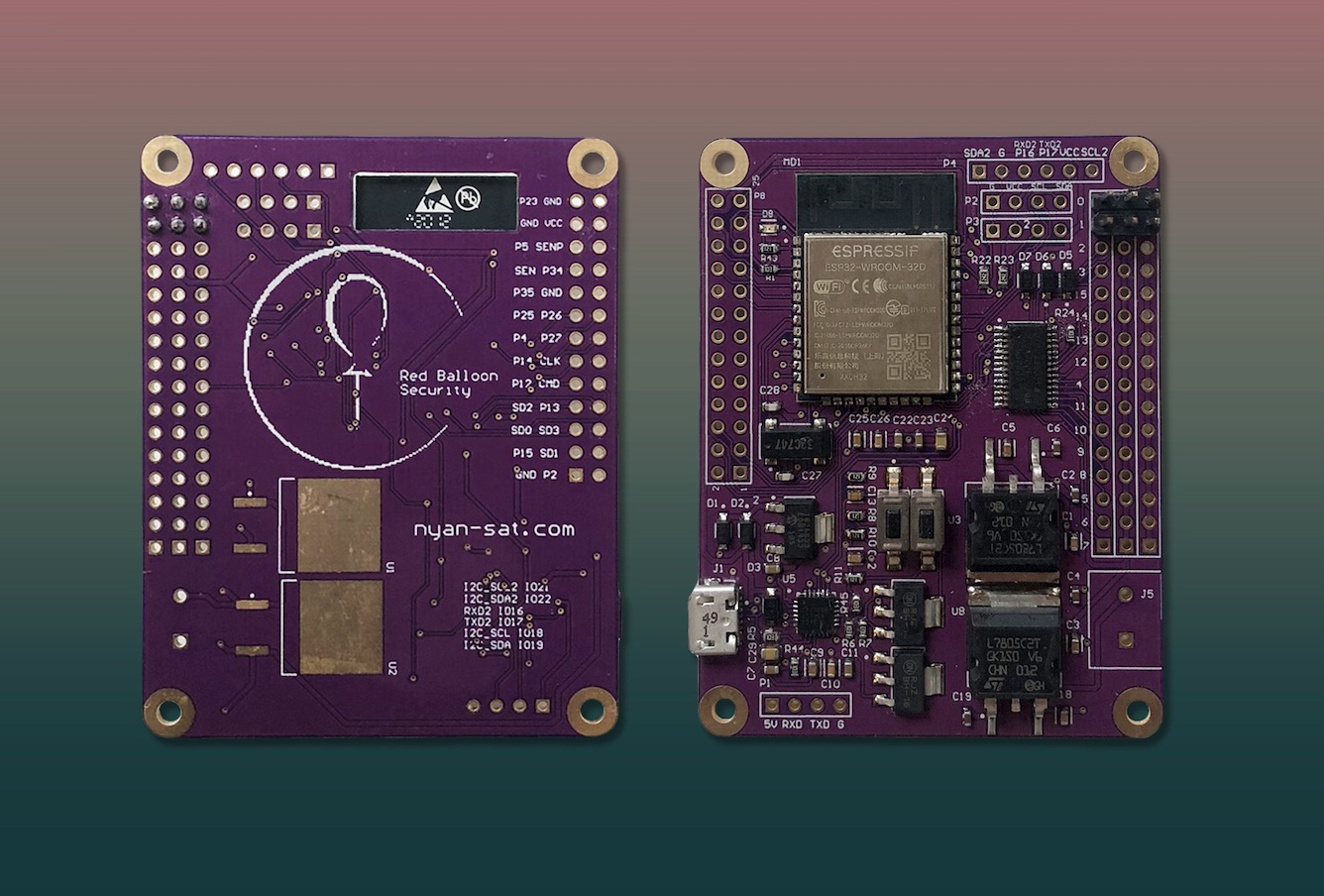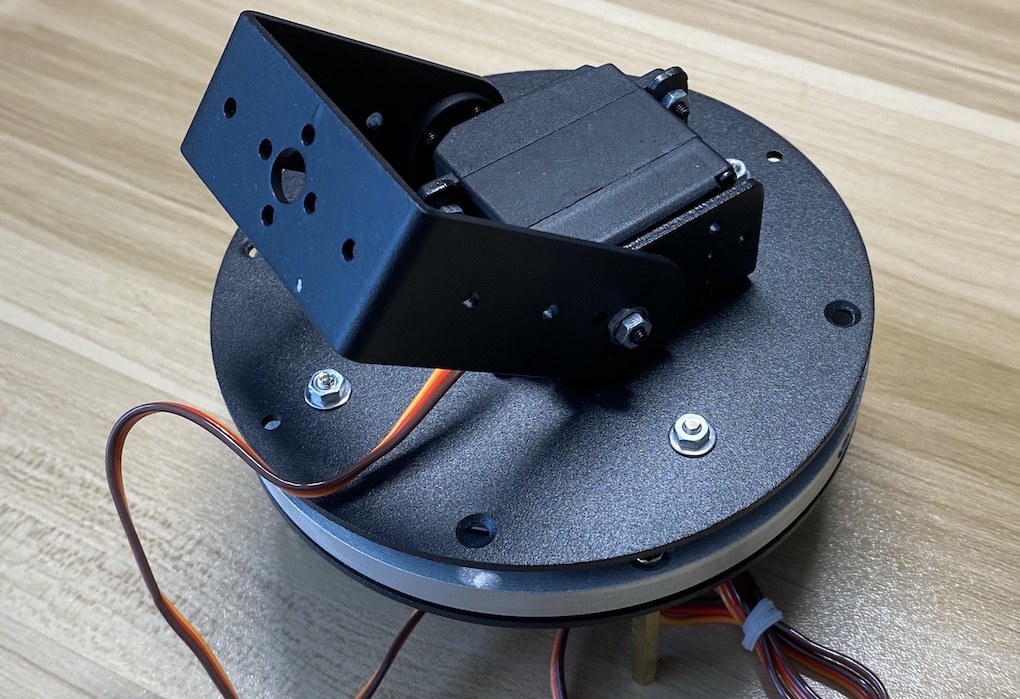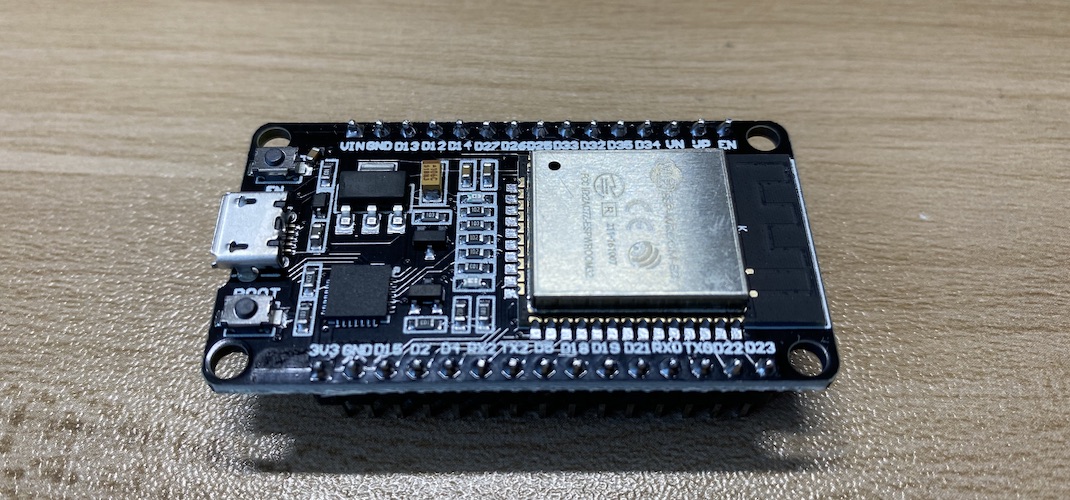Background
We'll be guiding you through a crash course on satellites - their history, where in (well, around) the world they are, and how they send and receive data. Accompanying this guide (though not strictly required for it) is a set of equipment we've used ourselves to get everything going.
If you have the means, we recommend buying the equipment yourself. If you don't, we've put together a kit that we'll send to you for a very reasonable price, though supplies are limited. The list of parts is below, or you can click here to request a kit. We also have stickers and T-shirts here. If you don't want a kit right now, you can continue on to the next section.
 Antenny v1
Antenny v1
Antenny PCB v1
For the kit, we custom-built a PCB in our kit that integrates multiple parts, allowing you to connect everything together on a single board with no wiring. This board is the hardware component of the RBS Antenny project. It combines the EPS32 (with Bluetooth and Wifi support), a 16 channel PWM driver, and a motor driver with a maximum output of maximum 27W at 6V. The RBS Antenny board can easily handle the movement control of NyanSat antenna gimbal, and you can load your own custom code to adjust it however you like. The onboard reserved I2C channel connectors allow you to extend the basic NyanSat setup with an RBS custom made IMU module, OLED screen and GPS module.
The RBS Antenny board is designed using Altium Designer and Assembled by an in-house pick and place machine in Manhattan, New York. After DEF CON, you can even repurpose the board for your future projects requiring microcontrollers and motor drivers. You can read more about it here.
Antenny PCB v2
After completing the Antenny v1 board, we found ways to enhance the board and designed the Antenny v2 which fixes bugs, improves functionality and reliability, and is now adaptable for future development on hardware.
 Antenny v2
Antenny v2
The main improvements to highlight from the Antenny v1 to the Antenny v2 are as follows.
- Reduced PCB size by 40%
- Breakout unused GPIO pins from ESP32 for future development
- Fixed I2C GPIO pull up bugs
- Enhanced power output of servo motor driver by 25%
- Added BeiDou/GPS (beitian bn-880) module connector pinout on PCB board
For more information on Antenny v2 and general setup, please review this document for pinouts and hardware requirements.
Parts
These are covered in more detail in Chapter 4. Feel free to skip ahead. Not every part here is strictly required - feel free to only get the ones that interest you.
Pan/Tilt Gimbal

This is a small gimbal we're using for pointing an antenna in a specific direction and track a satellite across the sky. They can be found multiple places. We have spare ones that we're selling at cost. Without one of these you can listen to geosynchronous satellites, but low orbit satellites will be whizzing across your antenna’s pickup area in seconds.
RTL-SDR

The cheapest and most flexible SDR available.
ESP32

Lots of features in a tiny package. This is the microcontroller that our software expects.
IMU
This Inertial Measuring Unit tells the software which way the antenna is pointing, helping you to point it very precisely.
Motor Driver

The ESP32 isn't able to drive the motors directly, so an adapter board is needed.
OLED Screen (optional)

Super simple display for getting quick feedback from the device.
NEXT CHAPTER





 Click here to watch Nyan Sat live!
Click here to watch Nyan Sat live!